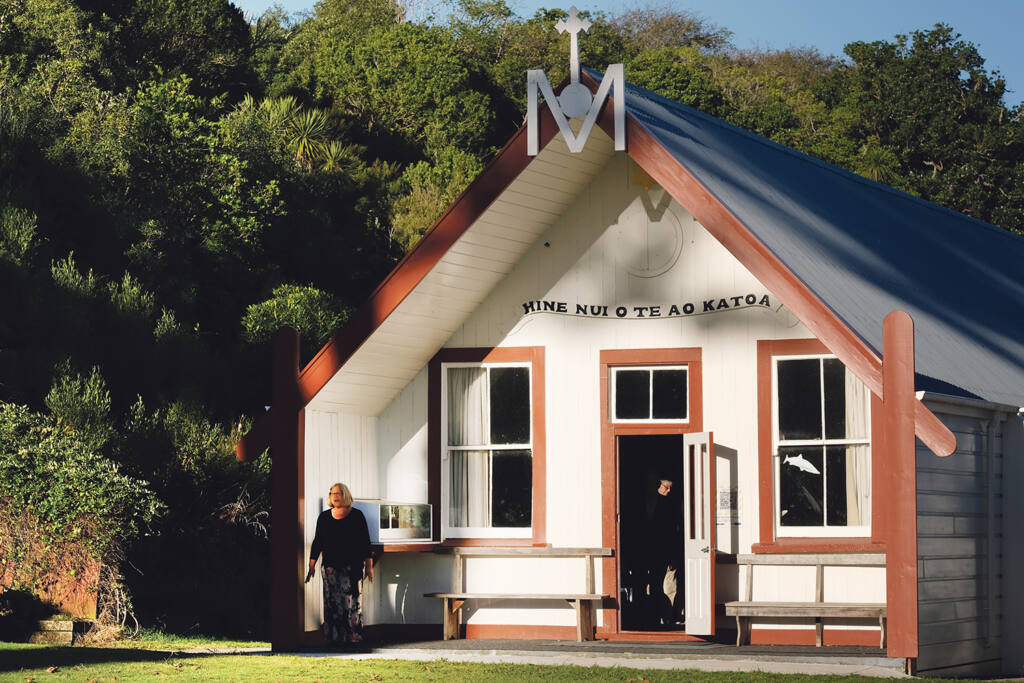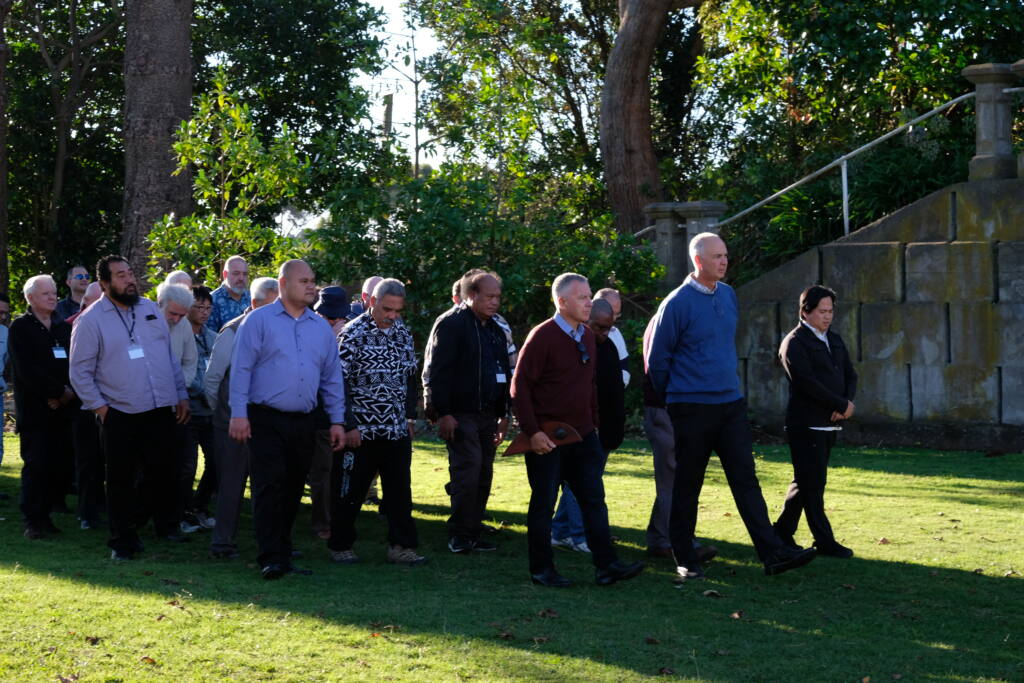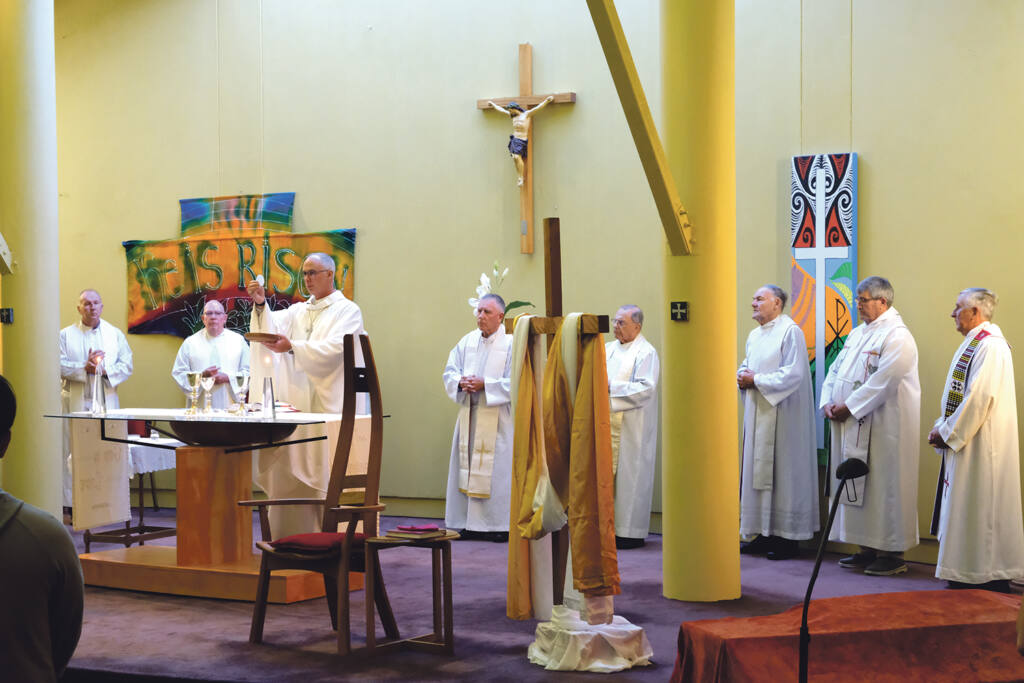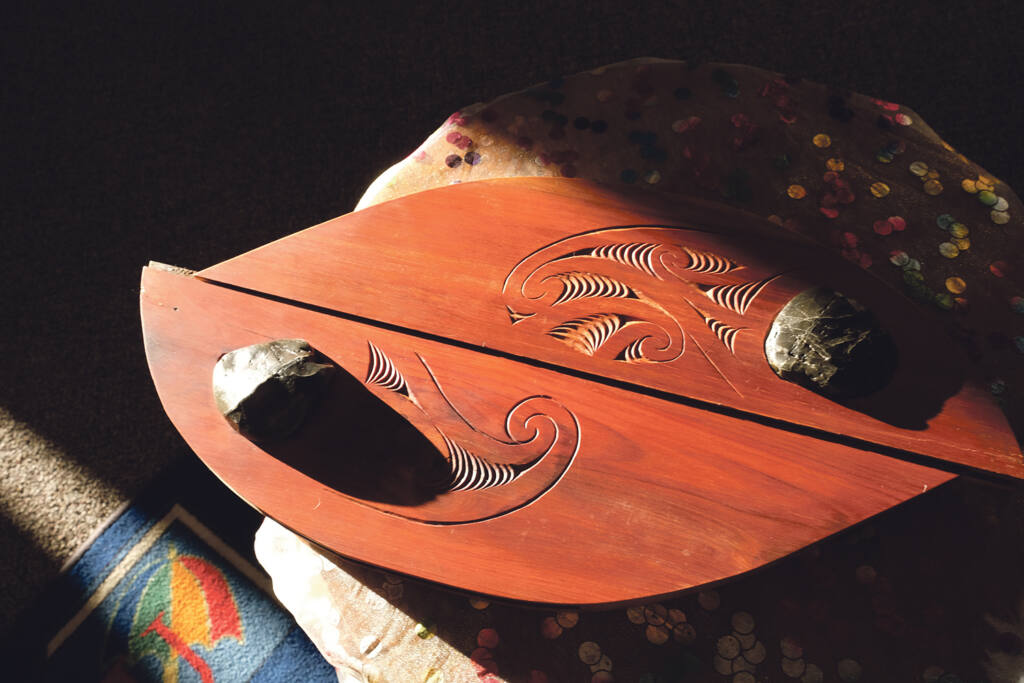WelCom May 2021
Fr Seph Pijfers
Last month, 41 clergy of the Archdiocese of Wellington gathered for a week-long assembly at Tatum Park conference centre, north of Ōtaki on the Kāpiti Coast. This was the first time in a good number of years the clergy have gathered for an extended period such as this. We were privileged too, to have Cardinal John Dew and Archbishop Paul Martin join us throughout
our discussions.
The gathering was a precious opportunity for clergy to reconnect, reflect and receive the fraternal support we have been missing during the long months of Covid-19 lockdowns and disruptions. It was a time to offer mutual support, a time to rest, a time to speak to what was most pressing to us in parish ministry and life as a priest in the archdiocese.
A highlight of the week was a visit to Pukekaraka marae in Ōtaki. Here we learned of a significant development in the life of the archdiocese. A renewal of the bond with Pukekaraka marae being formally made in terms of a covenantal relationship with the Archbishop and enshrined in signature and a carved taonga last year.
This covenant brings with it an exciting new vision to re-engage with Māori and to become a shrine of national pilgrimage dedicated to Our Lady. There was much to be grateful for here, as much for the new vision, as for the healing of a relationship lost over time in misunderstanding and at times hurt.
The outcomes of our week grounded themselves in four main areas of interest that will have deep implications for clergy and for parish life as we move ahead. First and foremost, was that existing structures of parish life cannot be sustained in the new reality God is calling us to. The implications of our multicultural context, the limited numbers of clergy, and synodal approach to church life invite radical new ways of how clergy understand their role and share in ministry.
We are deeply grateful to Fr Brian Cummings who brilliantly facilitated the overall context of our discussions during the week. His questions led us all to reflect on what it means to be a priest in the Archdiocese of Wellington in 2021 and beyond!
Fr Seph Pijfers is parish priest, Our Lady of the Bays, Tasman District.

Urutakai Cooper, standing in front of Hine Nui o te Ao Katoa meeting house, calls the manuhiri onto Pukekaraka marae. 
Fr Dennis Nacorda, parish priest for Hāto Hohepa – St Joseph’s, Levin, leads Cardinal John Dew, Archbishop Paul Martin and the clergy onto to the marae. 
Following the pōwhiri Archbishop Paul Martin presided at Mass in the adjacent parish church, Hāto Mere – St Mary’s. 
The two halves of the taonga of the Kawenata, te mauri ō ‘Te Raiti Tonihi’, signify the relationship between the hapū and the archbishop. Photos: Annette Scullion/WelCom
A covenant renewed
Mons Gerard Burns
A deep theme in the Bible is the covenant relationship between God and his people. There are various covenants in the Scriptures – with Abraham and Sarah, Noah, Moses, and others. And in the Mass we celebrate the ‘new and eternal covenant’ in Christ.
During the priests’ assembly the clergy working in the archdiocese visited Pukekaraka marae in nearby Ōtaki. Not only was it an experience of marae protocol but an introduction to the covenant between local hapū, Ngāti Kapumanawawhiti (Ngāti Kapu) and the Church.
The clergy together with our archbishops, Cardinal John and Archbishop Paul were called on to the marae by Urutakai Cooper.
Inside the meeting house – Hine Nui o te Ao Katoa – kaikōrero Pā Phil Cody and Wawata Johnson welcomed the priests and especially Archbishop Paul making his first visit as a bishop to the marae.
In pride of place was the carved taonga o te Kawenata (taonga of the Covenant) symbolising the relationship between the archdiocese and the hapū.
Fr Dennis Nacorda, a recent graduate of te reo Māori at Te Wānanga o Raukawa, spoke strongly on behalf of the manuhiri.
Following the pōwhiri Archbishop Paul presided at Mass in the adjacent parish church. Back in the wharenui, Oriwia Raureti from Ngāti Kapu gave an account of the relationship between the hapū and the Church.
This account started with the welcome given by the hapū to the first Marist priests in the area [1840s] and the sharing of land by the hapū for the Catholic faith, including the church and school there.
The story included a theological presentation of Māori spirituality at the time of the arrival of the first Marists that enabled the hapū to see a strong relationship with Catholicism.
The presentation also covered the pain felt by the hapū when the covenant between the hapū and the Church was forgotten and not respected.
That story included the recent process to bring the relationship back to pre-eminence through a signed document and the taonga held jointly by the hapū and the archbishop.
The priests learnt of the unique place of the church buildings and the marae in Ōtaki – it is not that the marae is on land attached to a church but that the marae came first and the church is on Māori land. To help understand the connection the priests received a copy of the document signed in late 2020 renewing the covenant between the hapū and the archdiocese.
There was also an explanation of the taonga of the Kawenata, te mauri ō ‘Te Raiti Tonihi’. It has two halves, one held by the archbishop and one by the hapū, which fit together as one piece. Each time there is a meeting of the two these pieces will be put together.
Following this presentation, the priests enjoyed a nourishing and abundant meal in the wharekai before returning to Tatum Park.
For this writer the encounter gave new understanding of the history of the Church in the archdiocese and the way the mission of the Church is to be carried out in Aotearoa New Zealand.
Mons Gerard Burns is Vicar General, Archdiocese of Wellington.